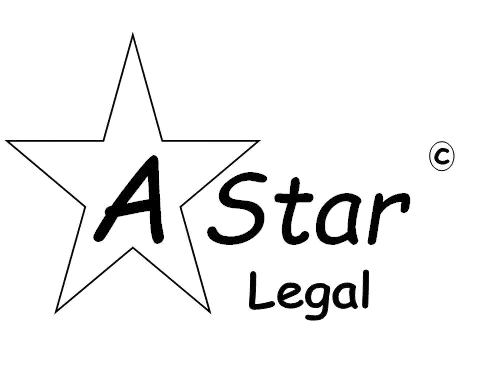Last updated on April 18th, 2025 at 11:48 am
ISo 13485 sets standards for Quality Management Systems in the medical devices industry to ensure safety and compliance.
ISO 13485 establishes a framework for organizations to ensure consistent product quality, safety, and regulatory compliance, emphasizing risk management and process control throughout the product lifecycle. Adhering to this standard is often crucial for entering markets in many industries.
ISO Certification in 24 Hours – Fast and Easy!
Contact Us Today!
Hire the Best ISO Certification Consultant Call +91 9314321001
Table of Contents
ToggleWhat is ISO 13485
ISO 13485 is a global standard that outlines requirements for a quality management system specific to medical devices. It helps ensure the safety, effectiveness, and consistent quality of medical products and related services.

Why ISO 13485 is Important
ISO 13485 is important because it ensures the safety, quality, and reliability of medical devices by establishing a strong quality management system. It also helps manufacturers meet regulatory requirements, gain market access globally, and build trust between customers and healthcare providers.
Requirements of ISO 13485
- Customer focus
- Continuous improvement
- Leadership
- Evidence-based decision making
- Process approach
- Relationship management
Benefits of ISO 13485
- Manage risk management
- Continuous improvement
- Regulatory compliance
- Wider market access
- Streamlined processes
- Enhanced productivity
- Enhance credibility and trust
- Competitive advantage
- Improved customer satisfaction
ISO 13485 Certification Process
- Get management support- Ensure top-level management is fully committed and provides the necessary resources for the implementation.
- Identify requirements- identify the specific requirements of ISO 13485 and relevant regulatory standards for medical devices.
- Define the scope of your ISO 13485 implementation- Identify the specific areas of the organization, products, or services that will be included under the QMS.
- Define processes and procedures- Establish and document processes, methods, and workflows that align with ISO 13485 standards.
- Implement processes and procedures- Roll out the defined processes and ensure they are consistently followed throughout the organization.
- Deploy training and awareness programs- Conduct training for employees to raise awareness about ISO 13485 and ensure they understand their roles and responsibilities.
- Choose a certification body for your ISO 13485 implementation- Engage a trusted certification body to audit and confirm your alignment with ISO 13485 standards.
- Operate the QMS/ measure the system- Start operating the QMS and continuously monitor its effectiveness and processes.
- Conduct an internal audit- regularly perform internal audits to check the QMS compliance with ISO 13485 and identify areas for improvement.
- Conduct a management review- Organize management reviews to assess the performance of QMS, examine audit results, and strategize for continual improvement.
- Take corrective actions- Address any non-conformities and issues discovered through audits or reviews by implementing corrective actions.
- Perform a certification audit- Go through a comprehensive certification audit to validate your conformity with ISO 13485 standards.
Documents Required for ISO 13485
- Quality manual
- Medical device file
- Responsibilities and authority
- Document control
- Control of records
- Procedure of validation
- Process of design and development
ISO 13485 document requirements under different clauses
- Clause 4: Quality Management System
| Clauses | Documents |
| 4.1.1 | Roles undertaken by the organization under applicable regulatory requirements |
| 4.1.6 | Procedure and records for the validation of the application of computer software |
| 4.2.2 | Quality manual |
| 4.2.3 | Medical device file |
| 4.2.4 | Procedure for document control |
| 4.2.5 | Procedure for record control |
- Clause 5: Management responsibilities
| Clauses | Documents |
| 5.3 | Quality policy |
| 5.4.1 | Quality objectives |
| 5.5.1 | Responsibilities and authorities |
| 5.6.1 | Procedure and record for management review |
- Clause 6: Resource Management
| Clauses | Documents |
| 6.2 | Procedure of training |
| 6.3 | Requirements for infrastructure maintenance activities |
| 6.4.1 | Requirements for the work environment |
| 6.4.2 | Arrangements for the control of contaminated or potentially contaminated products |
- Clause 7: Product realization
| Clauses | Documents |
| 7.1 | Process for risk management in product realization |
| 7.1 | Outputs of product realization planning |
| 7.2.2 | Record of the results of the customer requirements review and action arising from it |
| 7.2.3 | Arrangements for communication with customers |
| 7.3.1 | Procedure for design and development |
| 7.3.2 | Design and development planning |
| 7.3.4 | Design and development outputs |
| 7.3.5 | Record of design and development review |
| 7.3.6 | Design verification plans, results, and conclusions |
| 7.3.6 | Design validation plans, results, and conclusions |
| 7.3.8 | Procedure for transfer of design and development outputs to manufacturing |
| 7.3.9 | Procedure and record for control of design and development changes |
| 7.3.10 | Design and development file |
| 7.4.1 | Procedure for purchasing |
| 7.4.1 | Criteria and records for evaluation and selection of suppliers |
| 7.4.3 | Record of verification of purchased product |
| 7.5.1 | Record for each medical device or batch that provides traceability |
| 7.5.2 | Requirements for the cleanliness of products |
| 7.5.3 | Requirements for medical device installation and acceptance criteria for verification of installation |
| 7.5.3 | Records for medical device installation and verification of installation |
| 7.5.4 | Procedure and record for servicing the medical device |
| 7.5.5 | Record of sterilization process |
| 7.5.6 | Procedure and record of the production and services provision process validation |
| 7.5.7 | Procedure and record for validation of the process for sterilization and sterile barrier systems |
| 7.5.8 | Procedure for product identification |
| 7.5.9.1 | Procedure for traceability |
| 7.5.9.2 | Record of traceability and name, and address of the shipping package consignee |
| 7.5.10 | Record changes to customer property |
| 7.5.11 | Procedure for preserving the conformity of products |
| 7.6 | Procedure for monitoring and measuring |
| 7.6 | Record for calibration |
| 7.6 | Procedure and record for validation of the application of computer software used for monitoring and measuring |
- Clause 8: Measurement, analysis, and improvement
| Clauses | Documents |
| 8.2.1 | Procedure for customer feedback |
| 8.2.2 | Procedure for records for complaint handling |
| 8.2.3 | Procedure for reporting to the regulatory authorities |
| 8.2.4 | Procedure for internal audit |
| 8.2.4 | Record of audits and their results |
| 8.2.6 | Identity of the person authorizing the release of the product |
| 8.3.1 | Procedure and record control of the non-conforming products |
| 8.3.4 | Record of rework |
| 8.4 | Procedure and record for data analysis |
| 8.5.2 | Procedure and record for corrective actions |
| 8.5.3 | Procedure and record for preventive action |
Who is ISO 13485 applicable to
- Medical device manufacturers
- Contract manufacturers
- Suppliers of medical device manufacturers
- Service providers
- Distributors and retailers
- Regulatory bodies
- Design and services
- Healthcare and laboratory equipment manufacturers
ISO 9001 versus ISO 13485
ISO 13485 is specially designed for the medical device industry, with a strong focus on meeting regulatory and compliance requirements. In contrast, ISO 9001 is a broader quality management standard that applies to various industries, including those that may not be subject to specific regulatory requirements.
As a result, ISO 9001 does not place as much emphasis on regulatory compliance as ISO 13485 does, which is tailored to the strict standards of the healthcare sector.
Read More: ISO Certification in India
What is a regulated working environment in ISO 13485?
A regulated working environment in ISO 13485 refers to a controlled setting where processes, equipment, and personnel are carefully managed to ensure compliance with safety, quality, and regulatory requirements for medical device manufacturing.
Key elements
- Quality management system- Establishes the overall framework for consistency, meeting customer and regulatory requirements through documented processes, procedures, and records.
- Management responsibility- Top leadership must take an active role in defining quality policies and objectives, while consistently showing commitment to maintaining and enhancing the QMS.
- Resource management- Focuses on providing adequate resources like trained personnel, infrastructure, and work environment to effectively implement and maintain the QMS.
- Product realization- Covers all steps from product planning to delivery, ensuring that medical devices are developed and produced according to customer and regulatory needs.
- Measurement, analysis, and improvement- Involves monitoring, auditing, and analyzing processes and products to identify issues, drive improvements, and ensure ongoing compliance and quality.
Similarities between ISO 13485 and ISO 9001
- Both standard guides organizations in establishing an effective quality management system.
- They emphasize identifying and reducing risks through structured evaluation and controls.
- Each adopts the PDCA methodology to promote ongoing improvement and operational efficiency.
- They emphasize the necessity of competent personnel and proper infrastructure to maintain and ensure high-quality outcomes.
- A strong focus is placed on meeting customers’ needs to deliver reliable and high-quality products.
Changes from ISO 13485:2003 to ISO 13485:2016
Key changes are-
- Increased focus on risk management across all processes.
- Stronger regulatory compliance requirements.
- Tighter supplier and outsourcing controls.
- More detailed documentation and validation are needed.
- Clearer roles and responsibilities for quality and management.
ISO 13485-related standards
- ISO 14971- Medical devices— Application of risk management to medical devices
- ISO 10993- Biological evaluation of medical devices
- ISO 62304- Medical device software— Software lifecycle processes
- ISO 15189- Medical laboratories— Requirements for quality and competence
- ISO 9001- Quality Management System
Difference between ISO 13485 and EN ISO 13485
ISo 13485 is an international standard for medical device quality management systems, published by ISO.
EN ISO 13485 is an European-adopted version of the same standard, harmonized with EU regulations, making it legally recognized in Europe.
Validity
3 years
Cost
The cost of ISo 13485 depends on-
- Size and complexity of the organization
- Existing quality management system maturity
- Scope of certification
- Certification body
- Internal resources
- Standard fees
Processing time
If you have applied for ISO 13485 from A Star Legal Associates, you will get an ISO 13485 certificate within 24 hours.
ISO 13485 Certification Consultants
A Star Legal Associates provides ISO 13485 in India. If you are also looking for ISO 13485 in India, you can contact A Star Legal Associates. Our team will guide you best about ISO 13485. For more details, you can contact us.
Conclusion
ISO 13485 is an essential standard that ensures medical devices meet safety, quality, and regulatory requirements throughout their lifecycle. Implementing it helps organizations boost product consistency, comply with regulations, and build stronger customer confidence.
FAQ
What is ISO 13485
ISo 13485 is an international standard for Medical devices— Quality Management System– Requirements for regulatory purposes.
ISO Certificate Renewal
Renewal after 3 years
How can implementing ISO 13485 benefit my organization
Implementing ISO 13485 helps your organization ensure consistent quality, meet regulatory requirements, and build trust in medical device safety and performance.
What does it mean for my company to be ISO 13485 certified
Being en ISO 13485 certified means your company meets international standards for quality and regulatory compliance in medical device manufacturing.
What is ISO 13485 latest version?
ISO 13485:2016.
What is the main purpose of ISO 13485?
The main purpose of ISO 13485 is to ensure the consistent design, development, and production of safe and effective medical devices.
How to get iso 13485 certification
You can contact A Star Legal Associates for the ISO 13485 certification process.
How many clauses are in iso 13485
There are a total of 8 clauses in ISO 13485.
- Clause 1: Scope
- Clause 2: Normative reference
- Clause 3: Terms and Definitions
- Clause 4: General requirements
- Clause 5: Management responsibility
- Clause 6: Resource Management
- Clause 7: Product Realization
- Clause 8: Measurement, Analysis, and Improvement
Is ISO 13485 mandatory for medical devices?
ISO 13485 is not legally mandatory, but it is often required for regulatory compliance and market approval of medical devices.
The ISO abbreviation in medical
The ISO abbreviation in medical devices is International Organization for Standardization (ISO).
ISO 13485 certification body in India
A Star Legal Associates is the best ISO 13485 certification in India. We will provide you with complete knowledge about ISO 13485.
List of ISO 13485-certified companies
- Dialine Diagnostic Systems Pte Ltd.
- MM Star Pte Ltd.
- Advanced Ophthalmic Innovations Pte Ltd.
- Alphamed Pte Ltd.
- Aitbiotech Pte Ltd.
ISO standards for medical devices
ISO 13485:2016 Certification



